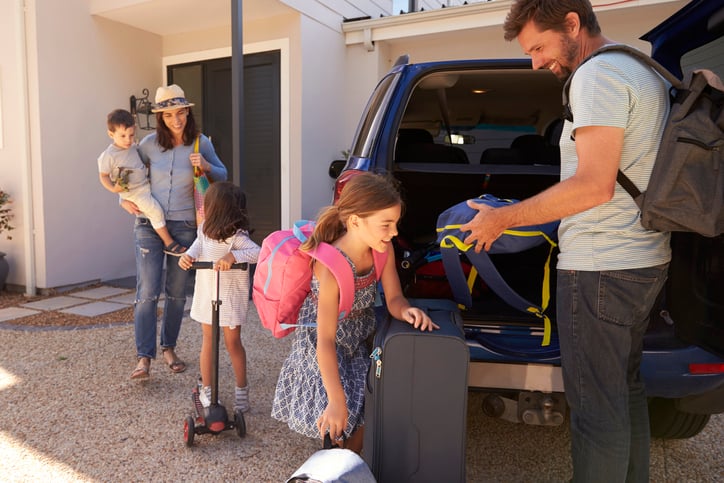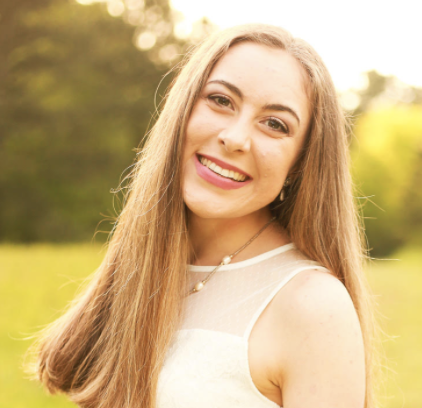Start Planning Your Summer Vacation Today!
6 Ways to Prepare Your Autistic Child for a Successful Vacation
Summer can be a fun time to plan vacations, but – for many on the autism spectrum – new environments, different locations, and sensory sensitivities can present a challenge when making travel plans.
Although eating out, socializing, and relaxing on the beach are common ways that many enjoy spending their summer vacation time, the needs of those with autism should be considered as travel plans are made. It is important to anticipate, plan for, and strategize around any accommodations that may be necessary when traveling with a child on the autism spectrum.
Planning ahead, creating a countdown calendar, and establishing a schedule are just several of the many approaches that can help travel plans run smoothly when vacationing with a child on the autism spectrum.
1. Plan Ahead
Discussing the trip ahead of time–and any expected plans it will entail–is an important first step. This will help reduce the anxiety that often accompanies travel. It may be helpful to talk through the type of transportation that will be taken, as some trips might entail traveling on an airline initially and, subsequently, renting a car to get from one place to the next after the final destination is reached.
Because sudden changes in routine can cause distress, sensory overwhelm, and meltdowns, discussing vacation plans in advance will help alleviate some of these stressors by allowing the child with autism to understand what can be expected before, during, and after the trip.
“Pre-introducing” new activities is an effective strategy that helps children with autism prepare for new activities. If, for example, a family will be vacationing on the coast, allowing the child to play in a small sandbox before arriving at the sandy beach will aid in the child’s understanding of what the sand will be like.
Furthermore, since many children with autism are sensitive to sensory input, providing protective items–such as socks, sunglasses, and noise-canceling headphones–can help prevent meltdowns. On the other hand, for children who are sensory seekers, sandy beaches may be an exciting place to visit as there are many opportunities for rich sensory experiences.

2. Develop a Countdown Calendar
A countdown calendar is another valuable tool for helping children on the autism spectrum visualize–and prepare–for the number of days remaining until a trip begins. Here are some ideas for implementing a countdown calendar:
- Circle the day that vacation starts on the family calendar and allow the child to cross off each day leading up to the trip; this will give the child a visual of the days remaining until traveling begins.
- Create a countdown calendar chain with construction paper by cutting strips of paper and stapling links together; each link in the paper chain can represent one day in the countdown until vacation begins.
- Implement an advent calendar with small daily prizes inside to get the child excited about the trip; each day in the advent calendar can have a short written note with an activity that the child can look forward to on the trip–or it may contain a toy that can be used on the vacation, such as sand toys for playing with at the beach.
- Use countdown blocks; this can be an effective and exciting way to engage children on the autism spectrum who enjoy math and working with numbers. Count down the number of days remaining by finding a set of wooden blocks with numbers ranging from 0-9 to track the number of days left.
For children with autism who especially struggle with traveling, it can be helpful to build excitement and anticipation around the countdown calendar by reminding the child of the fun activities that await them on the trip. Providing a small reinforcer each day that the countdown celebration occurs successfully can build anticipation around traveling. Have the child cross off each day leading up to vacation on the calendar, tear off a chain in the countdown link, or turn the wooden number blocks respectively.
3. Create a Schedule
Creating an itinerary for the trip can help children with autism grasp what a vacation will entail, and it will give them a general idea of what will take place–and when. Based on the child’s needs, a family may wish to create a detailed hour-by-hour schedule with approximate run-downs of the activities and meal times for each day of the trip. A less structured agenda–or even a visual schedule with picture symbols of daily activities–may also suffice, depending on the age and individual needs of the child.
For those who have substantial difficulty with changes in routine, incorporating several of their favorite activities during the vacation can be a helpful way to engage the child and get them excited about traveling. A family with a child who enjoys reading, for instance, may set aside time to explore a local library while on the trip. In this way, the child can look forward to an activity they find personally enjoyable.

4. Establish Rules and Stick to Them
Laying a foundational groundwork of rules to adhere to while vacationing is another essential step in the planning process. Plan to consistently celebrate and reinforce each child who engages in positive behaviors like following pre-established rules, listening to adults who are in charge, and regulating emotions appropriately. Reinforcers can be as simple as a hug or pat on the back, provided your child enjoys physical contact, playing with bubbles, receiving a favorite snack, giving the child a small toy, or using verbal cues such as “Good job listening well!”
5. Pack, Prepare, and Research in Advance
Try developing a “travel survival kit” with small items and sensory-friendly activities to keep children on the autism spectrum occupied, engaged, and calm in new environments. Sensory fidget toys, noise-canceling headphones, and other items that the child uses to self-regulate should be brought on the trip. Additionally, for those with special dietary needs, it can be helpful to pack extra snacks to have on hand. If one plans to go out to eat while on vacation, call ahead to ask restaurants about dietary and sensory accommodations that may be needed–or ask if reservations in a quiet area of the restaurant are available.
It can be wise to call the hotel in advance so that any necessary preparations and accommodations can be made before arrival as well. Aim to keep routines as structured, consistent, and similar to the way they are at home. For example, bringing a child’s favorite blanket and sound machine along to create a sleep environment similar to the one they have at home goes a long way.
6. Use Social Narratives and Have Extra Help
Finally, social narratives can be a helpful approach for preparing children on the autism spectrum to travel. These stories typically include expectations for what the trip will be like, what will take place, and when activities will happen. Depending on the child’s level of development, social narratives can range from simple to complex, and they may include part of the detailed itinerary for vacation. A child’s name can be used in the story or imaginary characters can be selected based on the child’s preferences and personal interests.
A social narrative preparing a child for vacation might sound something like this:
After arriving at the hotel, Sam will help his parents unload the rental car and take the luggage up to their room once the check-in process at the front desk is complete. Sam’s parents will show him where breakfast is served in the morning, and they will help Sam set up his bed with his favorite weighted blanket and sound machine.
It is worth noting that if there is enough in the budget for it, families may wish to hire a nanny, babysitter, childcare provider, or close family friend to accompany them on the trip. This can help alleviate the amount of stress placed on parents by providing extra assistance, and families with multiple children often find this help especially beneficial.

What are some strategies you’ve found successful when vacationing with a child on the autism spectrum? We would love to hear about them in the comments section below.
References
https://kghautismservices.com/5-strategies-to-help-your-child-with-autism-adjust-to-summer-vacation/
https://www.marcus.org/autism-resources/autism-tips-and-resources/summer-scheduling
https://riseandshine.childrensnational.org/preparing-your-child-with-autism-for-summer-break/
https://www.autismparentingmagazine.com/plan-fantastic-summer-break-asd/
https://www.cheshirefitnesszone.com/planning-a-successful-summer-vacation-tips-for-kids-with-autism/
For more helpful tips and strategies on planning your next vacation with a child on the autism spectrum, check out our handout here!

Kenna McEvoy
Kenna has a background working with children on the autism spectrum and enjoys supporting, encouraging, and motivating others to reach their full potential. She holds a bachelor's degree with graduate-level coursework in applied behavior analysis and autism spectrum disorders. During her experience as a direct therapist for children on the autism spectrum, she developed a passion for advocating for the health and well-being of those she serves in the areas of behavior change, parenting, education, and medical/mental health.




